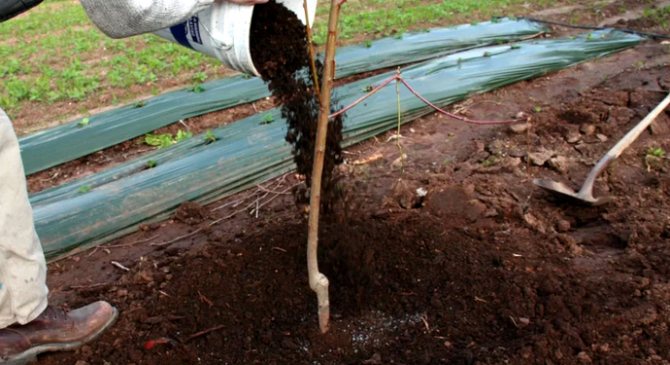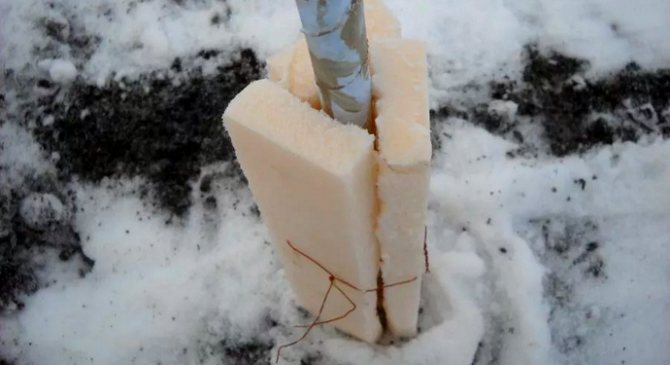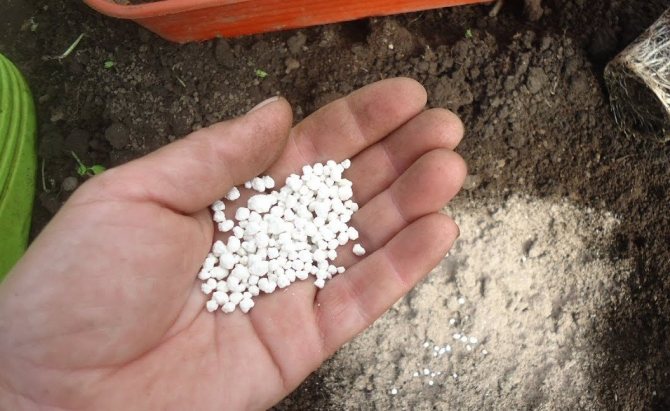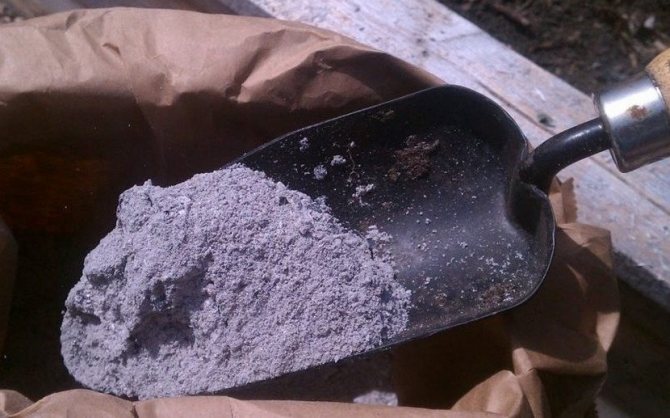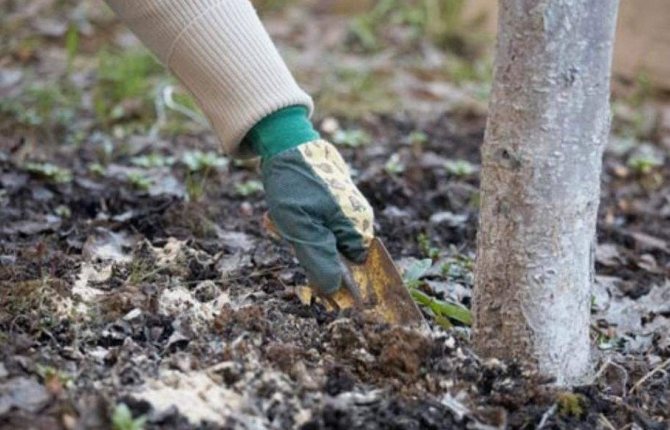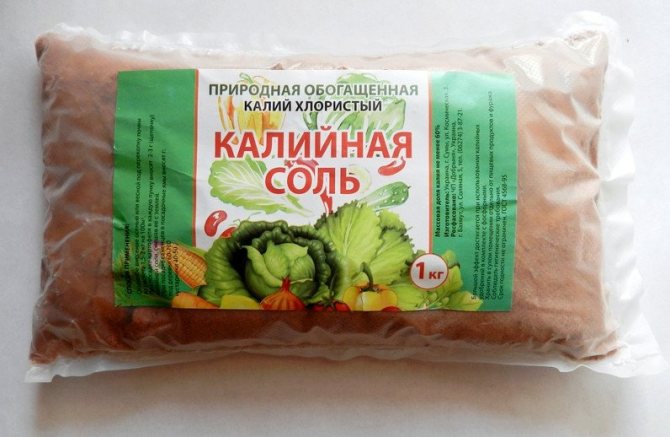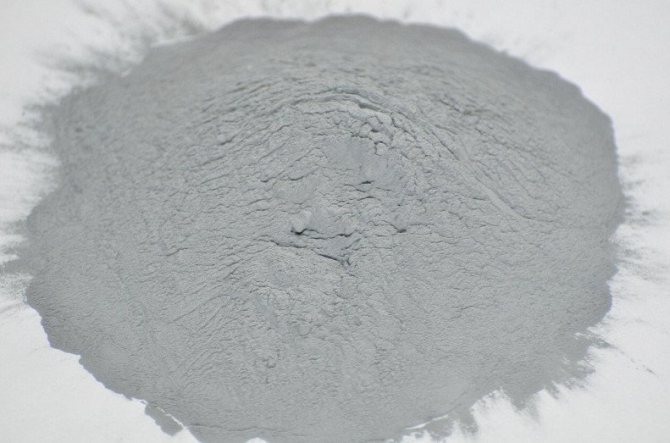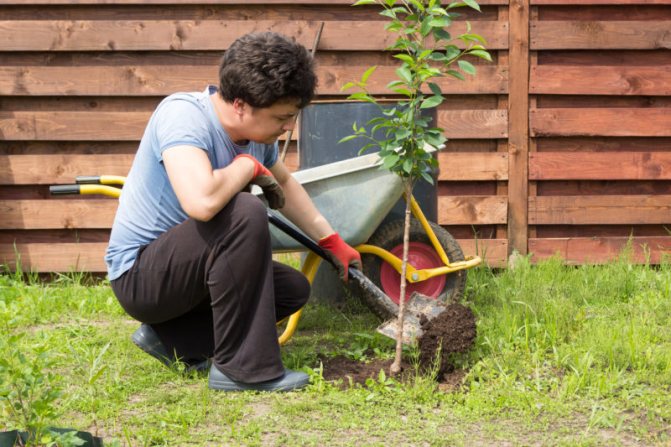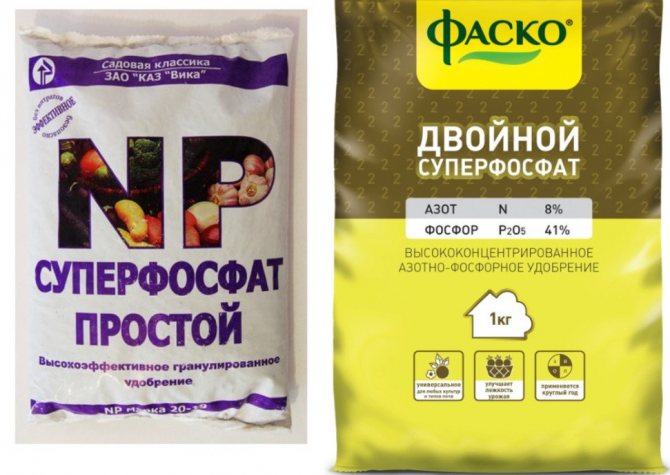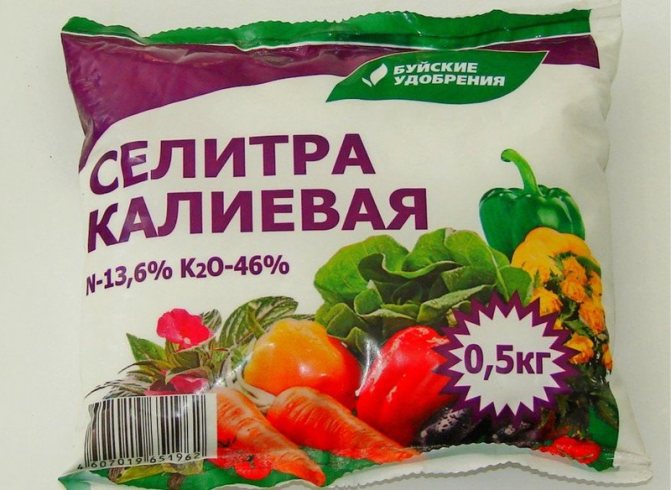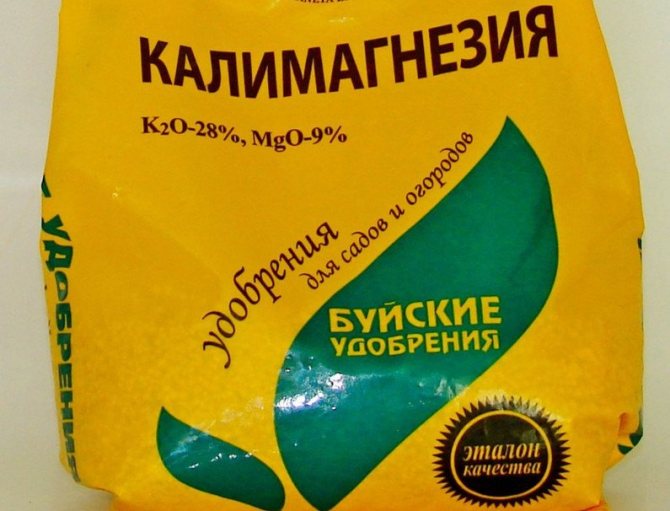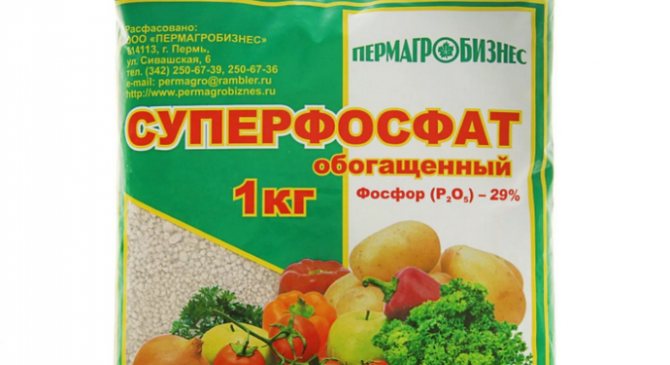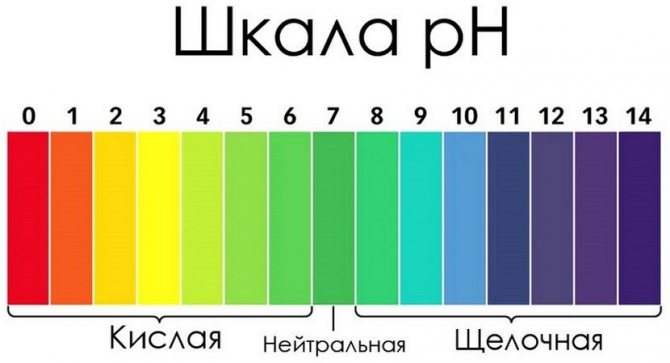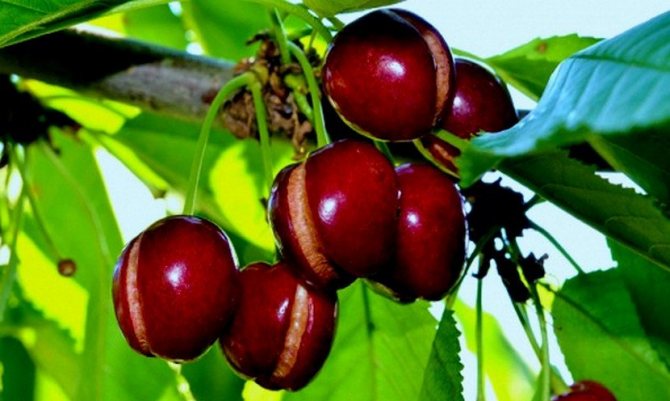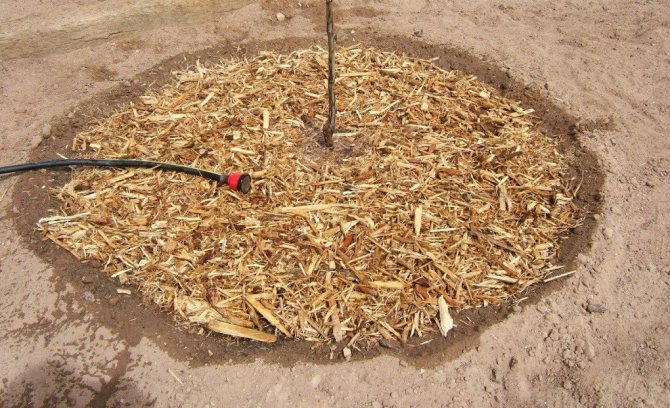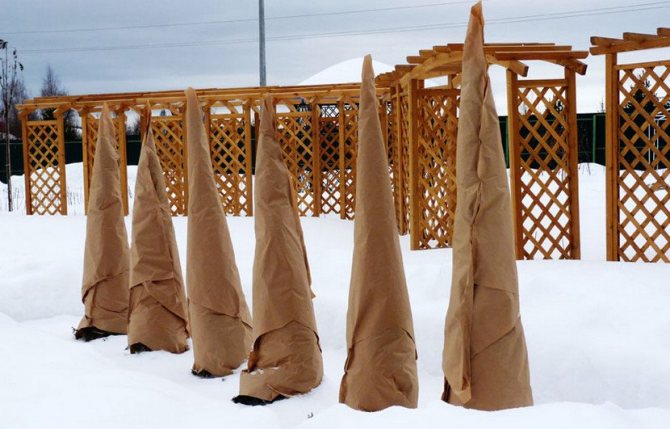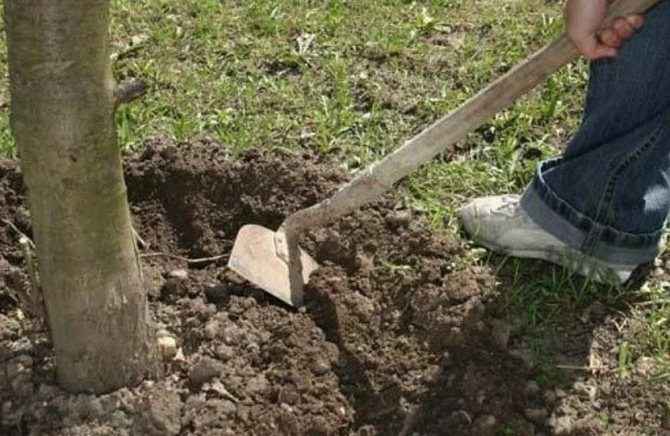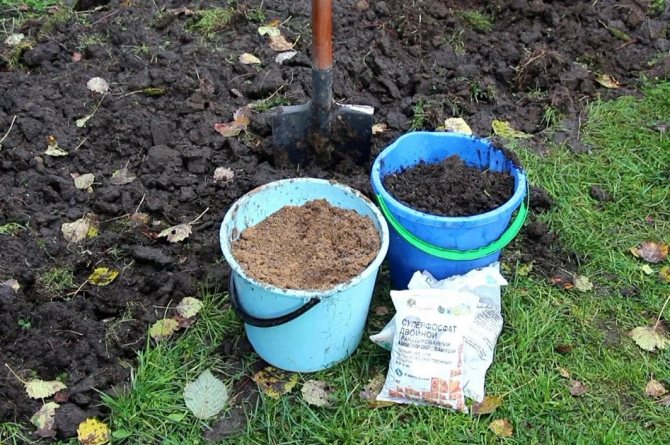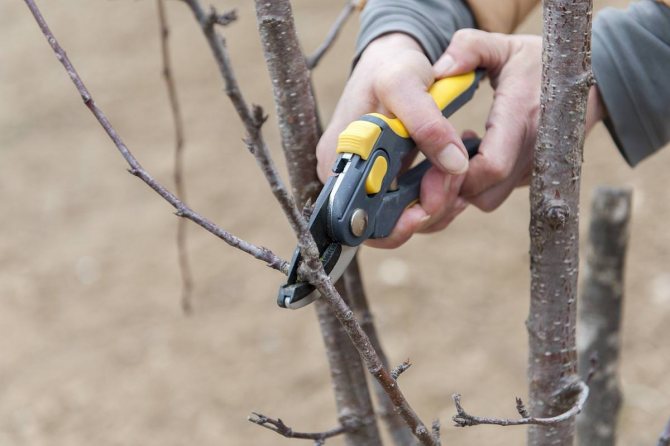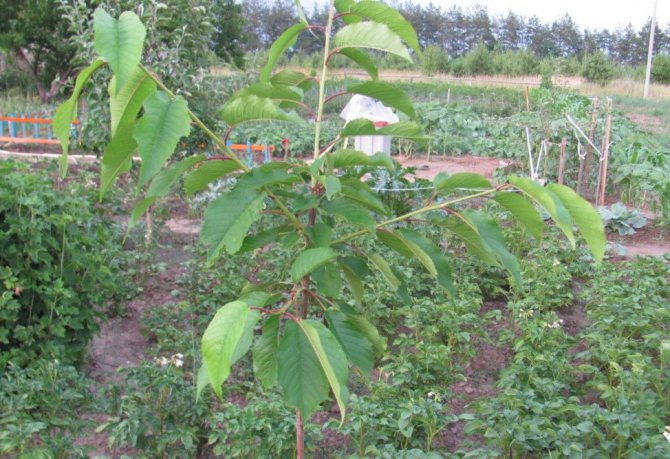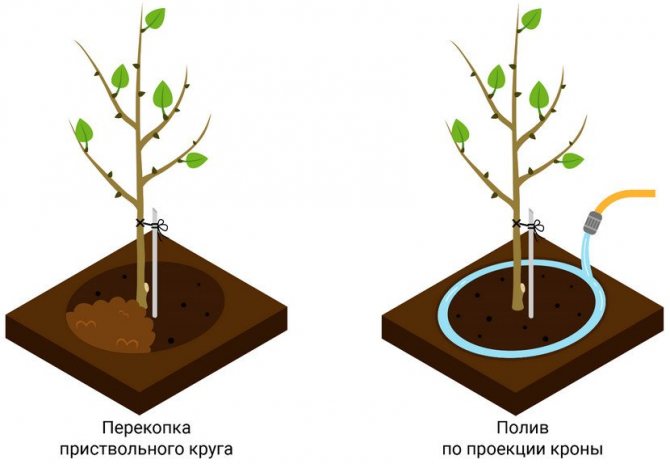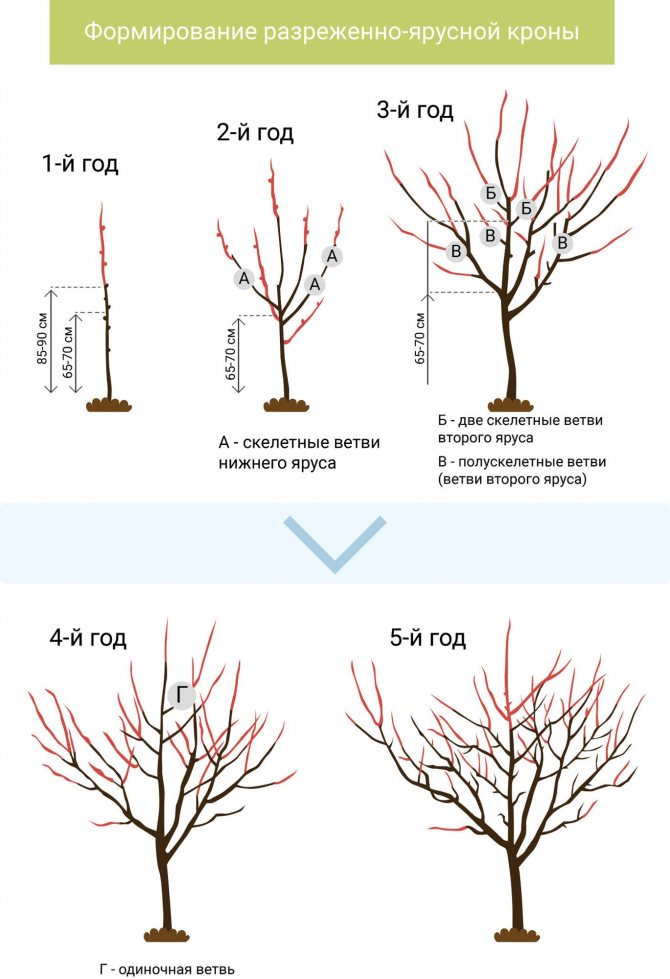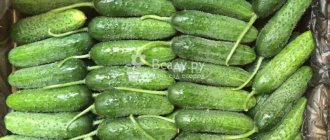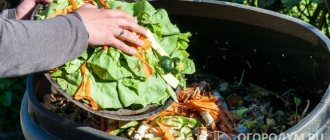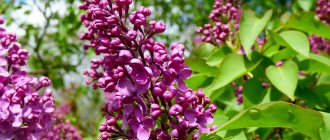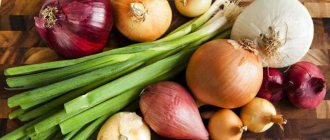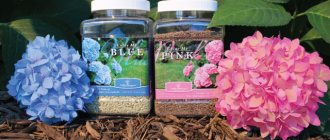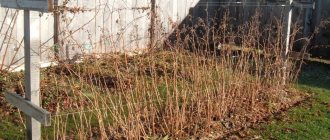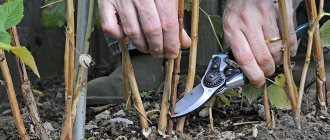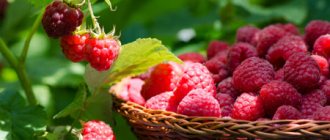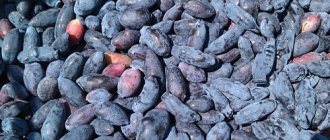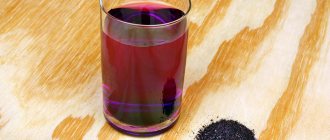Top dressing of cherries and cherries is carried out with the same fertilizers, in the same periods. It is a component of tree care, allows them to develop correctly, give a bountiful harvest and prepares them for the winter cold.
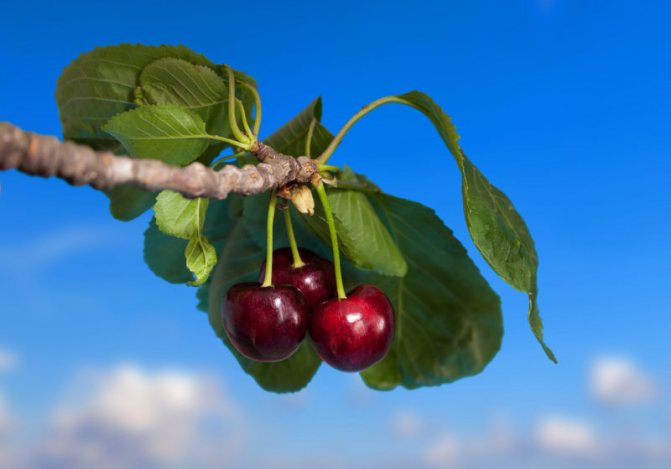
Top dressing of cherries and cherries is carried out with the same fertilizers, in the same periods. Illustration for this article is used under a standard license <784
Fertilizer types for cherries
For fertilization, organic fertilizing and agrochemicals are used. Consider the most commonly used fertilizers:
- urea;
- superphosphate;
- potash fertilizers;
- ammonium nitrate;
- compost;
- siderates;
- ash;
- lime;
- dolomite.
Note! The first two years after the rooting of a young tree in the hole, feeding is not carried out.
Fertilizers are applied in two ways:
- root irrigation;
- irrigation of the crown and trunk.
Watering the tree is carried out in a circle near the trunk. One young tree takes up to three liters of water; for an adult cherry, at least six buckets are required. After abundant watering, top dressing is applied. When using dry agrochemicals, the granules are shallowly embedded in the soil with a pitchfork or a rake (a shovel is not used in these cases).
Spraying with solutions begins 2 years after planting the seedling. When processing trees, the leaves, trunk and root circle are thoroughly moistened. Irrigation is carried out with a special sprayer.
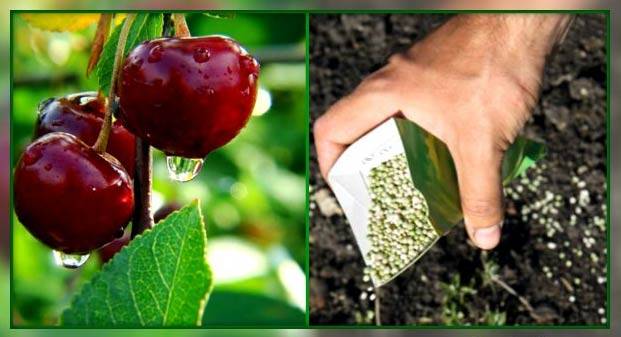

Moisture for your pet
Autumn watering is extremely important. Usually autumn pampers us with rains. But there are also exceptions. Therefore, control the dryness of the soil in the garden. In preparation for wintering, cherries need up to 10 buckets of water. This is on condition of dry summer and poor autumn for rains.
Watering is imperative on sandy loam or forest soils. On the lowlands, do not overload your pet with excessive moisture. It will not lead to anything good.
Mulching is best done after abundant watering if you think your tree needs it. This way you can keep the moisture around the roots as much as possible.
Organic additives
Organic matter not only enriches the fertile layer with nutrients, but also structures it well: it makes it loose and breathable. Compost and ash are used as a source of nitrogen, phosphorus and potassium.
Compost
Compost plentifully saturates the soil with nutrients. The compost heap is formed from peat, kitchen waste, chicken / cow dung. Also, the compost heap is watered with a solution of nitrate, superphosphate and urea. The compost matures for 3-4 months, and it takes up to 5 kg of the finished mass to feed a young seedling. For an adult cherry, you need 30 kg of compost mass.
Ash
Ash is a source of phosphorus and potassium, which are essential for cherries. The powder also contains other useful trace elements: zinc, iron, sulfur, calcium and magnesium. Plants are fertilized with ash throughout the growing season, and in preparation for winter, ash is an indispensable component.
Lime
Lime is necessary not only for whitewashing the trunks, but also for alkalizing the earth. Cherries do not like acidified soil, so it must be regularly deacidified with lime. Also, lime contains a sufficient percentage of calcium, which strengthens the root system and increases the immunity of plants. Dolomite has the same qualities.
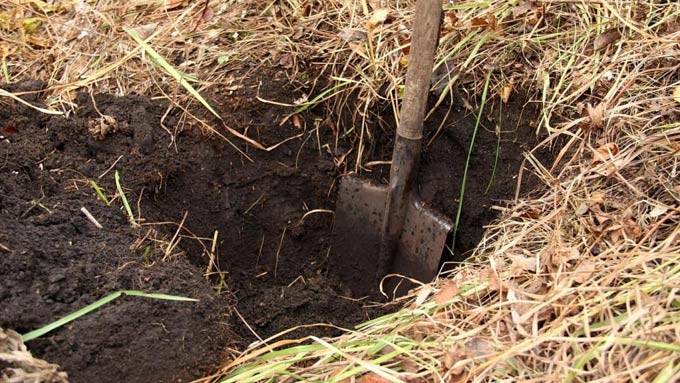

Siderata
Siderata are a quick and easy way to enrich the land with essential trace elements. To do this, plants are planted in the near-stem circle, then the stems 15 cm high are simply dropped into the ground. You can grow green manure in the garden, and then mow and bury it in a tree trunk circle. When decomposing, green manure gives the soil all the necessary substances (especially nitrogen).
Inorganic additives
Urea
Urea (carbamide) contains up to 46% nitrogen, which is very important for the growth of green mass. Urea is often combined with potash fertilizers, which forms a complete nutritional complex for spring feeding of fruit trees. In addition to nutrition, urea protects seedlings from fungal mold - coccomycosis. Trunks and branches are treated with it before the first frosts.
Superphosphate
Superphosphate contains up to 50% phosphorus compounds, useful for the development of seedlings. Phosphorus contributes to the development of a strong root system (especially important for young seedlings) and improves the palatability of the fruit. With a lack of phosphorus, the leaves become covered with yellow spots and acquire a purple hue. However, superphosphate cannot be used together with urea, chalk and nitrate. A week should pass between fertilization.
Potassium salts
Potassium salts ensure the resistance of seedlings to frost, so they must be added in preparation for winter. However, the dosage should be strictly observed, because an excess of chlorine (included in the composition) negatively affects the well-being of cherries.
Ammonium nitrate
Ammonium nitrate replaces urea, as it contains a sufficient percentage of nitrogen. The potassium content has a beneficial effect on the taste characteristics of the fruit and on the active planting of the crown.
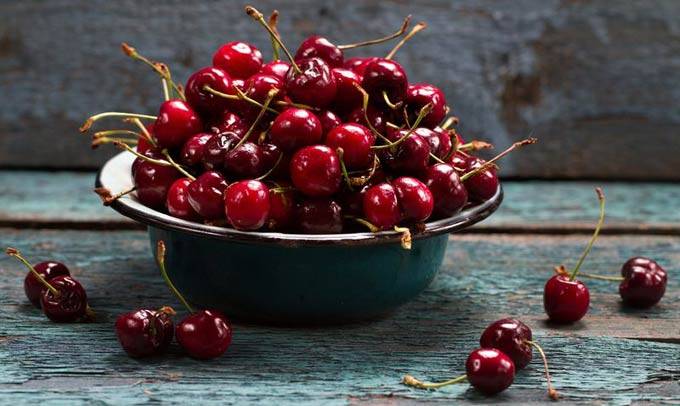

Make-up in summer
How to feed cherries in summer:
- a group of potash fertilizers;
- phosphorus;
- calcium;
- organic matter dissolved in water.
At the stage of fruit development, the plant needs active support with fertilizers. Organic matter is applied at the root, but only in a diluted form, otherwise the taste of the fruit will deteriorate and the risk of scorching the root system will increase.
Phosphorus-potassium compounds or PKU are involved in reproduction processes. Used to redirect the forces of plants to active budding and the formation of a healthy harvest. Potassium increases the ability of the root system to absorb water from the soil. It is applied at the root or spraying of the deciduous part with a solution is carried out. The main thing is not to overdo it, its excess leads to a deterioration in nitrogen absorption and a decrease in immunity. It is worth paying attention to the presence of chlorine in the composition of potash fertilizer. Cherries will not benefit from this substance.
Feeding with potassium sulfate is advisable. It is used on all types of soil and contains magnesium, calcium and sulfur. These substances help to improve the quality of the fruit, extend the shelf life, and also help remove nitrate compounds.
https://youtu.be/6gthO1MVe2U
Weak plants with a poorly developed root system are ideally suited for phosphorus mineral dressing. Phosphorus participates in the processes of photosynthesis and regulation of respiration of the plant organism, increases the sugar content of the crop. With a lack of substance in the soil, the timing of fruiting is shifted, growth slows down. Excess leads to accelerated growth of the trunk, deciduous part, which has a bad effect on the quality of the crop.
Fertilizers containing calcium, it is advisable to apply on acidic soils, with low crop resistance to rot. Dolomite flour and chalk are used.
Top dressing of cherries in spring
In spring, all plants are in dire need of nitrogen, which activates the rapid development of leaves. The source of nitrogen is ammonium nitrate and urea (carbamide). Fertilizers are laid even before the cherry blossoms begin. To do this, the trunk circle is abundantly moistened and the ground is irrigated with the prepared solution.Dry agrochemicals (granules) can also be added, but the aqueous solution quickly penetrates the ground and is absorbed by the root system.
Two-year-old trees are sprayed with a urea solution before flowering: take no more than 30 g per bucket of water. For root feeding, saltpeter is used: 20 g of powder per square meter of the trunk circle.
Trees older than 4 years old are fed with saltpeter and urea in the same proportion before flowering. During flowering, trees are fertilized with organic matter: infusion of cow dung and ash. For one seven-year-old tree, take a bucket of infusion (a liter of mullein and a glass of ash for a bucket of water), for older trees, up to three buckets of infusion are consumed.
After flowering, the cherry needs additional minerals, so the tree is fertilized with humus or a solution of mullein / chicken droppings. Before watering, the trunk circle is well irrigated with clean water, and then watered with an organic solution. Also, gardeners recommend using an ash solution to feed cherries in the spring.
To attract bees during cherry blossoms, the tree is sprayed with a honey solution. To do this, you need to dissolve a tablespoon of honey in a bucket.
Summer care
In the summer, the tree also needs nourishment. Organic fertilizers are used: humus, herbal infusion, compost. Only mature trees are processed: from four years. At the beginning of June, ammophoska (or its derivatives) is used. To fill 1 m2 of the groove of the trunk circle, 30 g of powder is consumed.
In August, adult trees also need replenishment. Feeding with phosphates and ash is used. One and a half liters of a working solution of superphosphate (25 g per bucket) and ash mixture (2 glasses of ash per bucket) are consumed per square meter of the near-stem furrow.
Note! In August, buds are laid for a new crop, so feeding the cherries is extremely necessary.
As soon as the fruits are harvested, the cherries must be fed foliarly - by spraying. Foliar feeding of cherries quickly saturates the tree with the necessary substances, and also repels pests and strengthens the immune system.
In the summer, cherries are treated with iron vitriol. The crown and the trunk circle (in the crown projection) are well moistened with the solution. The treatment is carried out in dry, calm weather so that the precipitation does not wash away the solution.
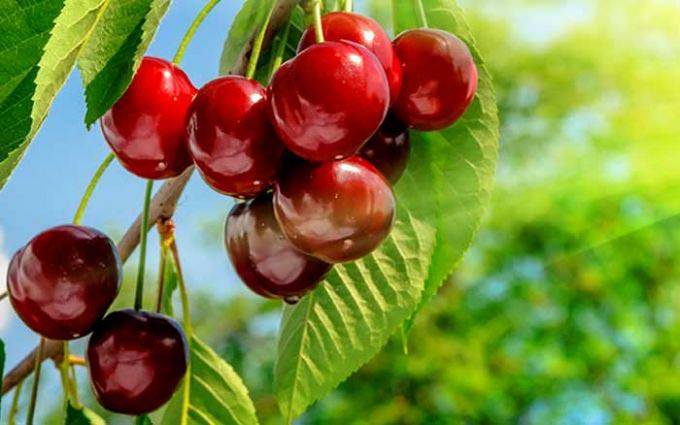

Autumn care
In autumn, fruit trees are prepared for winter frosts by supplying them with complex fertilizers. However, the composition of fertilizers should not contain nitrogen, since this microelement enhances landscaping.
Autumn work begins immediately after the leaves fall and the branches are cut. The near-trunk circle is carefully protected from litter, and the earth is dug deeply. After digging, fertilizer is applied.
Note! In autumn, digging is carried out with a pitchfork, not a shovel. Dug earth freezes less than compacted one.
In autumn, it is best to apply mixed organic-chemical fertilizers:
- chicken solution;
- compost;
- humus;
- sawdust;
- lime;
- ash;
- a piece of chalk.
Chalk is added if the wood is in dire need of iron.
Cherry belongs to lovers of alkaline soil, so gardeners periodically liming the soil around the trunk.
Autumn preparation is also necessary for young two-year-old trees. The seedlings are fed with superphosphate (up to 60 g per square meter of the near-stem furrow) and an aqueous mixture of potassium sulfate (25 g of an agrochemical is dissolved in a bucket). Organic fertilizing (compost or humus) is laid every three years: 4-5 kg of mass is consumed per square meter of the near-trunk furrow.
Fallen leaves must be burned: pests may be on it.
Trees from four to seven years old must be sprayed with a carbamide solution after the first frost. This will provide them with easy wintering. For the mixture, take 25 g of urea per bucket.For root feeding, 310 g of superphosphate is used (if you take double superphosphate, then the volume is halved). In addition to superphosphate, cherries are fed with an ash solution (it is enough to dilute one glass of wood ash in a bucket). Once every three years, cherries need humus or compost (they put up to 40 kg of organic matter in the trunk circle).
Old trees (after 7 years) are also sprayed with a carbamide solution after frost. Root feeding is carried out by introducing a superphosphate solution in a volume of 0.5 kg for one tree. Cherry also needs potassium complexes (sulphate or potassium chloride). Humus / compost is placed every three years in a volume of 50 kg for one tree.
Autumn care allows trees to overwinter without problems, and in spring they wake up quickly. Also, top dressing protects cherries from fungal diseases and attacks of insect pests. Experienced gardeners whitewash the trunks in the fall so that pests do not settle under the bark for the winter.
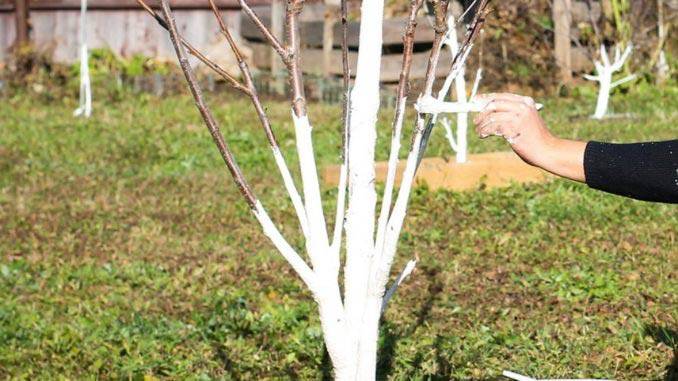

Fertilization rules
To properly fertilize fruit trees, it is necessary to form a near-stem circle. It is a furrow up to 30 cm wide and up to 25 cm deep. Top dressing is introduced into this furrow. The distance of the furrow from the trunk changes with the age of the tree and is consistent with the projection of the crown:
- young seedlings - up to 15 cm;
- biennial tree - up to 35 cm;
- three-year tree - up to half a meter;
- older trees - according to crown projection or 1.5 more.
In the spring, the trunk circle is the first to be freed from snow so that the earth above the roots warms up well in the sun. After the earth dries up in the near-trunk circle, it must be dug up (at least 15 cm deep). Digging is carried out twice during the summer and when preparing cherries for winter.
In order for moisture to be better preserved in the near-trunk circle, it is mulched after watering: humus, peat or dry / rotted manure are placed. In the spring, mulch is laid on top, in the summer it is buried in the ground. Autumn mulching of the trunk circle protects the root system from the cold.
Inexperienced gardeners spread fertilizers near the trunk of the tree, but this does not benefit the cherry: the suction roots are located in the projection of the crown, and not at the trunk.
Loosening or digging
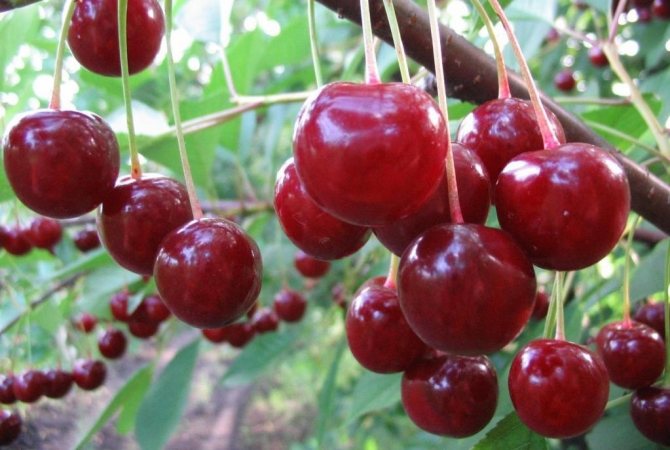

Among the work on caring for this species in the fall, it is worth considering loosening the soil or even digging. So you not only eliminate deep-seated weeds, but also give oxygen access to the roots. Digging will also contribute to the fact that the water will quickly go into the ground. This is important not only for obtaining nutrients, but also for protection from frozen melt water. Our winters are unpredictable. The thaw is often replaced by a sharp cold snap. And puddles form near the trunks, which can cause death.
To better saturate the roots with oxygen, dig up the ground around at least one meter radius. Such an area will be good for young seedlings, and older ones will have to expand the territory.
Digging depth - from 6 cm. It all depends on the soil. On clayey lands, it is better to make the depth a little deeper.
After digging, mulch the soil around the cherry. For mulch, you can use various means - sawdust, butcher, peat, etc. But it is better to take a closer look at mulching with compost. This will not only help to preserve the soil, fight weeds, but will nourish your pet for a certain period of time.
Outcome
Fertilizing cherries creates favorable conditions for harvesting a bountiful harvest. For feeding, organic substances and agrochemicals are added. In the spring, cherry trees are fed with a large amount of nitrogenous substances for active gardening and flowering, phosphorus and potash fertilizers are applied in summer, and in autumn the trees are prepared for the winter cold.
[art_yt id = "XL8pFVEWG3s" wvideo = "680" hvideo = "360" position = "left" urlvideo = "undefined" namevideo = 'Fruit trees.Why don't cherries and plums bear fruit? Fertilizing fruit trees ’desc =’ Today we will talk about one common problem: the lack of fruiting of stone fruit crops. Cherries, plums, cherry plums - why don't they bear fruit and how to fix the problem? Let's analyze all the possible causes of this problem, as well as its solutions. ’Durationmin =” 07 "durationsec =" 11 "related =" true "upld =" 2018-06-01 "]
Preparing for winter
Sweet cherry gives a harvest in autumn. Flowering and fruiting processes require a lot of energy, which the plant receives from organic and mineral elements. Since trees are not transplanted into more fertile soil, like houseplants, their growth and development must be stimulated with fertilizers.
The sweet cherry will continue to grow without top dressing, and next year flowers and berries will appear on its branches. However, the taste of the crop will be noticeably reduced, the fruits will be small and not juicy enough. The chemical composition of the soil also affects the amount of the crop - if you restore it with organic and mineral fertilizing, you can get much more berries.
Important! Autumn feeding is more important than spring feeding. Fertilizers applied to the soil in spring do not begin to decompose and are not immediately absorbed by the rhizome, so the tree uses previously accumulated substances.
So that it is not sour
Cherries do not like excessive acidity in the soil. Take care of this feature. Add dolomite, lime, chalk at least once every few years. If you have not noticed the growth of horsetail, sorrel on the site, then one such treatment will be enough in five years. If there are indicator plants, then it is necessary to apply more often - once a year or two. The amount depends on the indicator. Ideally, an acidity test is a good idea. When adding antioxidants, remember that their action will be neutralized by organic matter, nitrogen. Therefore, enter everything separately, dividing as much as possible in time.
Naturally, the acidity of the soil does not affect the taste of the berries. But on the other hand, it affects the condition of the tree, its growth, the assimilation of nutrients. Which in turn will lead to crop loss.
We figured out how to feed the cherries, how to care for this southern princess. But in any case, the primary role is played by the land, climate, care. The experienced eye of the owner is what will help to make the right choice when growing any plant. Cherries are no exception. You can talk a lot about the amount of fertilizer applied, but the result will be optimal only when controlled. How the pet feels, what drugs and how it reacts - only the gardener will see this.
Be attentive, love your garden - it will reciprocate with you and a good harvest!
Terms of work
The fertilization regime depends on the age of the cherry and climatic conditions. For the first time, you can feed a seedling the next year after planting in open ground, after which the procedure is repeated annually. In autumn, it is not recommended to use nitrogen fertilizers - they provoke the formation of young shoots.
It is important to observe the timing of fertilization. Top dressing is carried out after the slowdown of vegetative processes, when the air temperature drops to 0 degrees and stably stays at this level. In temperate climates, this period occurs in October or November. If you fertilize the soil ahead of time, cherries can start using fertilizers and respond to them by accelerating growth and development. New shoots appear on the tree, and it turns out to be unprepared for frost.
Universal green manure
Siderata will offer help in feeding the garden trees and bushes. These crops are real helpers for the gardener and gardener. They nourish, restore balance, and help in weed control. There is not so much work with them: I sprinkled the seeds into the dug or loosened soil, leveled them with a rake - and wait for the shoots. If the period is dry, then you will also have to water.The green mass, which grows in frost, will fall off under the influence of low temperatures, cover the soil. Green manure contains a large amount of nutrients. These are not chemical compounds, but natural components that are perfectly absorbed and will not harm either the tree or the person who will consume the fruits.
Fertilizers and feeding
There are 2 main types of fertilizers - organic and mineral. Both varieties are essential for cherries in the fall. There are some guidelines for choosing a top dressing:
- organic matter (manure, humus, compost or bird droppings diluted with water) is the main source of nutrients for cherries;
- an alternative to natural organic matter is purchased fertilizer for fruit trees, which can be purchased at a specialized store and used according to the instructions;
- potash and phosphate compounds are best applied not at the end of autumn, but during digging and loosening of the soil;
- nitrogen fertilizers are recommended to be applied only in the spring, since they stimulate the growth and development of new shoots, the processes of flowering and fruit formation.
Advice! Top dressing is applied not at the root, but in the trunk circle. The optimal dosage for adult cherries (over 5 years old) is 2 buckets of humus, as well as 200 g of phosphates and 150 g of potash fertilizers. For a young seedling, half a bucket of organic matter, 50 g of phosphates and 30 g of potassium compounds are enough.
If fertilizers are applied at the root, they can cause chemical burns of the rhizome, therefore it is necessary to form a near-stem circle. To do this, the soil around the trunk is cleared of leaves and dug up with a pitchfork. The diameter of the circle should roughly correspond to the width of the crown. Next, you need to dig in the soil 10-15 cm deep, leaving a section around the trunk with a diameter of about 50 cm.
The next step is fertilization. So that they do not damage the plant and have the maximum benefit, it is worth following a certain algorithm:
- the loosened soil is watered abundantly - up to 2 buckets for an adult cherry or 1 bucket for a young seedling;
- organic fertilizers are applied to the pits - humus or compost;
- mineral dressings in the form of a powder are diluted with water and poured into the ground;
- if the soil is wet after rains, sulfates and potassium compounds can be simply poured into the trunk circle.
Abundant watering is necessary not only for better absorption of nutrients, but also to protect the rhizome. Diluted in water, they have a positive effect on the condition of trees. However, fertilizer concentrates are corrosive and can cause chemical burns. In this case, the plant will not only fail to accelerate growth and development, but may also die.
At the end of autumn, it is also recommended to prune the crown. This procedure will clear the tree of unnecessary shoots, after which the cherry will use its energy to form and grow new branches. In addition, the bark of damaged shoots may contain pathogens of fungal or parasitic diseases. They also need to get rid of, otherwise they will begin to develop anew after warming. However, it is better to leave the forming image for the spring - in the autumn period the regeneration processes proceed more slowly.
So that the tree does not die
It is a pity to find out in the spring that your pet will no longer be able to bear fruit - she has died. The reason for this may be not only frosty winters, but also rodents. Hares can completely destroy a young tree. An older plant will cause significant damage. Therefore, it is still worth wrapping the barrel.
All kinds of baits are laid out on the site. For example, "Storm".
In addition to rodents, sunburn is also a danger in winter. Young seedlings are especially affected by them. Wrap their trunks with sacking. Spunbond can be used. Good feeding and timely watering will also help prevent sunburn. A strong tree will not be as susceptible to disease.And subzero temperatures will not be terrible for him.
Major mistakes
There are a number of contraindications for applying fertilizers in autumn. Experienced gardeners know all the intricacies, but beginners can make serious mistakes. They can lead to a slowdown or untimely acceleration of vegetation processes, activation of pathogenic microorganisms and plant death.
Among the main mistakes that garden tree owners make are the following:
- Fertilizing too early is the first mistake. Falling leaves is a landmark that the vegetation processes have already stopped, and additional feeding can be added.
- Nitrogen fertilization in autumn causes abundant growth of young shoots. A large amount of nitrogen in the soil can cause the tree to resume vegetative processes before cold weather. The branches can freeze, and the next year it will not be possible to get the harvest.
- The opinion that a plant that has already grown and began to bear fruit no longer needs feeding is erroneous. If the reserves of nutrients in the soil are not periodically replenished, it will be depleted, and each next year will be less productive.
- Fertilizing when there is insufficient watering can be hazardous to the tree. Chemical concentrates will traumatize the roots and will have the opposite effect.
Important! Preparation of cherries for winter should be comprehensive. Fertilization may not be enough. The tree also needs annual pruning, loosening of the soil, treatment from parasites, and in cold climates - shelter from frost.
Flavoring in the fall
Top dressing of cherries in autumn after harvesting is no less important than spring feeding. Timely application of fertilizer allows you to increase frost resistance, reduce susceptibility to diseases and pests. They begin to feed the tree after the foliage has fallen off, which is previously collected from the site and burned. Afterwards, sanitary pruning, watering and loosening of the trunk circle are carried out. Fertilizers are applied from September to November, depending on the climatic zone. Preparing for winter too early can provoke increased plant growth, which increases the risk of freezing.
Organic matter is applied on scanty soils. In other cases, such fertilization will peroxide the soil and reduce the plant's immunity. The optimal choice at this stage is superphosphate. It is a complex fertilizer containing nitrogen, potassium and phosphorus.
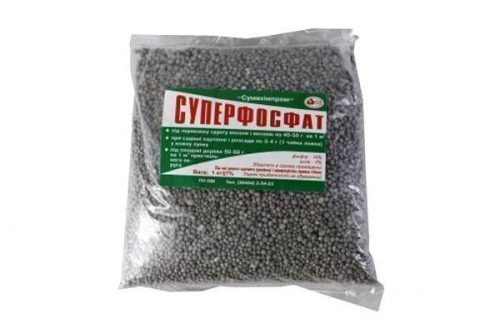

Superphosphate is suitable for autumn fertilization of cherries
Planting a young cherry seedling
It is better to buy seedlings in the fall, since at this time nurseries and private dacha farms offer a large selection. It is not recommended to purchase specimens that are grown from seeds. Such trees do not have varietal characteristics, that is, the cherries will be small and sour.
If you want to plant winter-hardy cherries, then when buying you need to pay attention to the place of grafting on the trunk of the seedling. If this is not found, then the sellers are offering a regular variety.
After buying the tree, you need to dig it into the ground in order to plant it in the spring before the buds swell. This must be done at the end of April. At the beginning of May, it is no longer possible to plant cherries.
A place for cherries or cherries is selected according to the following parameters:
- open sunny space;
- well hydrated, but without stagnant water;
- sheltered from the north winds.
Planting in spring is carried out in several stages:
- A pit 60 cm deep and 50 cm wide is being prepared.
- Humus 1 - 2 buckets are poured to the bottom. If the soil is clay, then another bucket of sand.
- From mineral fertilizers potassium sulfate 40 g and 100 g of superphosphate.
- Sprinkle the nutrient layer on top with earth and set the seedling. Nearby, you need to hammer in a wooden stake to support the tree.
- The soil is gradually poured into the pit, watered and tamped. A bucket of water is poured on top.
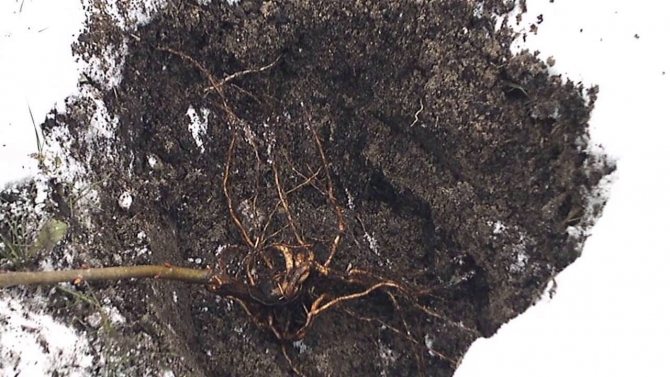

In spring plantings, it is not advisable to add nitrogen or lime for deoxidation, as these substances can damage the root. Nitrogen fertilizers are applied when the planting pit is being prepared in the fall.
The same goes for deoxidizers. You can use a complex mineral fertilizer, for example, nitrophoska or azofoska. Potassium and phosphorus are stable minerals and bind well to the soil. The nitrogen will have time to decompose and will not harm the roots in the spring.
If the feeding of cherries in the fall before spring planting is carried out correctly, there is no need to add any nutrients for the next 2 to 3 years. If it is noticeable that pests have started on the seedling, then foliar spraying with chemicals is carried out. During the growing period, it is advisable to protect cherries from the invasion of caterpillars and beetles, since immunity is laid in the tree.
Shrub pruning
Of all types of pruning, shaping and sanitary cleaning of the crown is used for young seedlings.
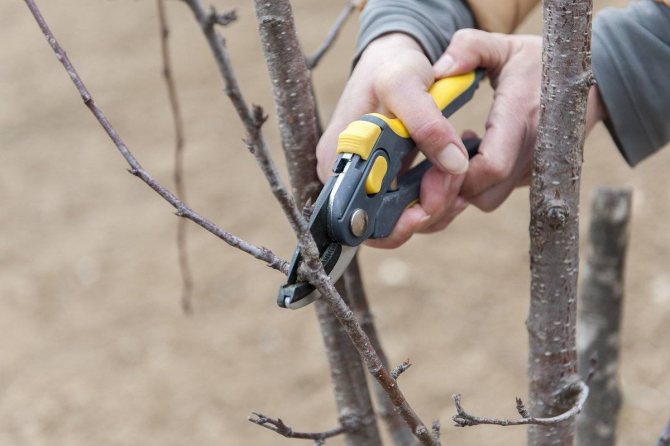

This is necessary for the tree to form skeletal branches that grow at a certain angle to the ground. If the tree begins to bear fruit, the weight of the shoot will increase significantly and the branch may crack. After planting in the spring, the first pruning is done in the fall: right after the tree has shed its leaves.
If the seedling is less than 70 cm, then pruning is carried out next spring. Usually the central shoot is shortened so that the tree grows wide. This is important for the convenience of harvesting. Cut off the shoot over 6 buds. The growth angle should be no more than 40-50 degrees in relation to the central shoot. The strongest branches are selected and left. The rest are removed or shortened.
After 2 years, 2 - 3 tiers of main branches should form on a young tree. Additional shoots are also formed on them, which are shortened. If the shoots dry out or are damaged by diseases, they are removed completely. Sections are covered with garden pitch. It is not recommended to do pruning just before frost, as this can lead to freezing of the shoots.
Worth it or not
In the fall, some gardeners carry out pruning of cherries. But there are opponents of such works. At this time, the tree does not have the same restorative power as in spring. The wounds will take a long time to heal and crack. And this is a breeding ground for diseases, infections and pests. Therefore, it is still better to postpone pruning for the spring. But if such a need exists, then after all the actions with the branches, process the slices according to all the rules. Peel off immediately with a special knife, and then coat very well with garden varnish.
Removal of diseased branches and their damage can lead you to the need for autumn pruning. During this period, it is much easier to do this. Defects are better visible, and the spread of diseases can be avoided, the faster they are eliminated.
But it is better to postpone the formation of the crown. By the way, this pruning technique is simply necessary for young seedlings. Sweet cherries do not do well with a good arrangement of branches.
It is better to give a certain look to the crown, to cut off especially elongated branches in winter. The central stem of a sweet cherry usually grows slowly. But the side ones are fast. This is not desirable. But at the same time, we will not cut the central one. Therefore, it is necessary to monitor the growth of the side. Pruning them regularly will help not only to give a beautiful shape, but also to achieve a better harvest.
Autumn care activities
Regularly feeding cherries in summer, autumn and spring begins from the third year, when the supply of nutrients ends in the soil, and the tree begins to bear fruit, that is, take away the remnants of food from the soil.
Video: How to feed cherries in the fall
How to feed cherries depends on the availability of fertilizers. It can be organic matter - manure, compost, chicken droppings or green manure. If there are no animals and birds in the household, then gardeners use purchased mineral compositions. They also have a good effect on yield, but are not recommended for long-term use, as the soil is depleted.
The best option is a combination of organic and mineral fertilizers.
Organic matter for cherries
Organic matter is useful in that soil bacteria are needed for its decomposition. Plant and animal residues serve as food for microorganisms. In the course of their activity, substances are released into the soil, which are called humus. Humus is black in color and rich in nutrients.
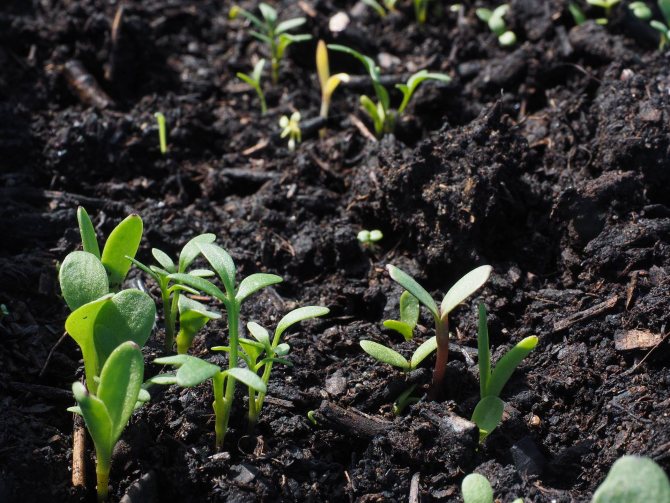

It is better to apply organic matter in the fall, as it takes time for its decomposition.
How to fertilize cherries in autumn:
- rotted manure, humus or compost;
- green manure or green manure;
- bone meal or horn shavings;
- wood ash.
Fresh manure is dangerous due to the concentration of nitrogen, therefore, feeding cherries in August with fresh substance is not carried out. If there is nothing else, then proceed as follows:
- Fresh manure is poured into the bucket by 1/3 of the volume.
- Pour in water and leave for 2 weeks, stirring occasionally.
- Next, the solution is diluted: 1 liter per bucket of water.
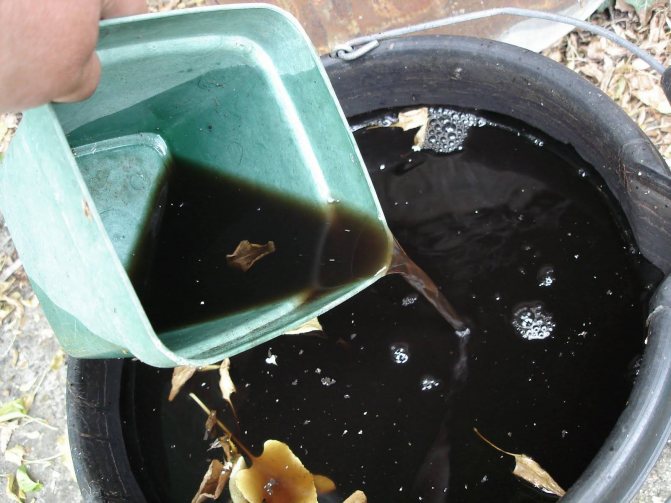

Such a "talker" is used after the tree goes into sleep mode and the movement of sap is suspended. In the area of the trunk circle, they dig up the soil, pour in the slurry and cover it with a layer of soil. Fresh manure is preferable to use for feeding cherries in summer or spring, when the tree needs nitrogen to gain green mass or keep the foliage in good condition.
It is safer to use wood ash, since there is no nitrogen in it, and the amount of potassium, phosphorus and trace elements is very large. Plant residues in the form of ash are also insisted on water and poured into the ground under the cherries, after which they are covered with earth. It is imperative to cover the ash with soil, since soil microorganisms process organic matter in the dark. Under the influence of sunlight, they die.
The use of green manure for feeding
The cheapest fertilizer than cherries are fed in autumn is green manure.
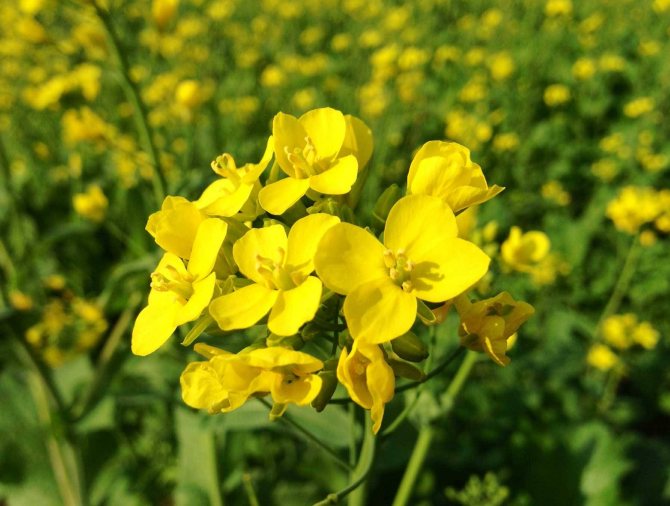

You can sow any seeds that will grow in 1.5 months and will be ready for use as organic matter. They are cut off or left in the winter, and in the spring they dig up already decomposed remains with soil. Such feeding of cherries replaces expensive manure and well restores soil fertility.
Bone meal is a long-lasting fertilizer, which is used to feed cherries in August-September. It is introduced once every 3 years, since microorganisms process the substance for a long time and release phosphorus and calcium into the soil. When working with bone meal, it is necessary to use nitrogen and potassium supplements in order to maintain the balance of nutrients.
Mineral substances and complex mixtures for cherries
Fertilization of cherries in autumn is carried out with minerals, the composition of which can be controlled independently. To do this, they buy potassium sulfate and superphosphate in a gardening store. For one adult tree you need 40 g of potassium sulfate and 100 g of superphosphate.
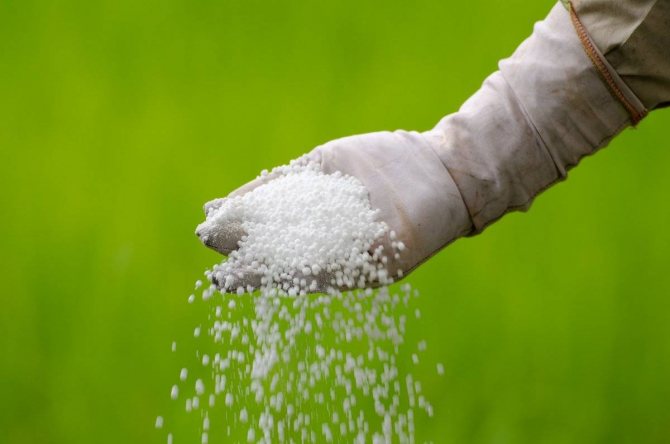

Fertilizers dissolve in water and are applied in the fall just before the colds, or are scattered dry on the ground. Before this, it is necessary to water the tree abundantly, especially if the autumn was dry. Water protects the roots from freezing, and in spring the tree enters the flowering phase faster. Top dressing with watering is the latest in this season.
For good fruiting of cherries and cherries, it is recommended to apply nutrient mixtures immediately after harvest.
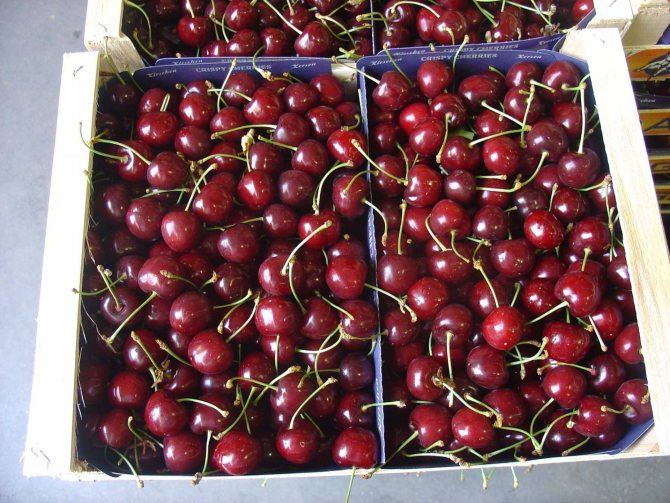

Sweet cherry gives early harvest, until autumn at that moment is still far away. Therefore, so that the tree does not starve, complex mixtures are used - two or three-component, the nitrogen content of which is below the spring rate. It is not advisable to use mineral nitrogen separately, as it quickly enters plant tissues and stimulates shoots to grow.
Not lignified by winter, they will die and become a source of infection for large branches. Most of all, after fruiting, trees need potassium and phosphorus. Therefore, watering with a nutrient solution will not be superfluous and will allow the cherries to lay more vegetative renewal buds for the next season.
Potassium also helps to strengthen the immune system against garden pests and protect the root system from drought or spring stagnation. If there is a lot of snow in winter and in spring the water stagnates longer than usual, then the potassium-phosphorus nutrition will support the tree and prevent the roots from dying from lack of oxygen.
Did you like the article? Share with your friends:
Organics plus minerals
For a balanced diet, combined fertilizers should be used. It is good to combine organics with minerals.
Organic matter is applied directly to the root. The best option is rotted manure or compost. You can also please with a ditch of peat. There are a lot of nutrients here for your cherries. By the way, the cherry has the same requirements as its elite relative. So, while taking care of the first, do not forget to take care of the second.
The radius of dropping organic matter depends on the age of the seedling, how far its root system has grown. Planting depth - not less than 20 cm. Sweet cherry roots go deep into the ground. Therefore, the closer food is to them, the faster they will receive it and put it into action. Sprinkle the compost layer well. There should be no paths or gaps through which the water will wash out the nutrients. And some of them do not like the flow of air.
Mineral fertilizers should be applied to the ground in the fall. It is best to opt for superphosphate and urea. You can simply sprinkle them around on the loosened soil. But keep in mind that the soil must be moist. If it is dry, be sure to water it generously. If the autumn is dry or your pet is growing on a strong hill, then it is worth dissolving these substances, and then adding. It is not difficult, but now for sure all the most useful will fall into the ground, to the roots.
A mixture of superphosphate and urea is enough 200 grams for a young seedling. If he is older, then bring this amount per square meter from the calculation.
It is not worth pouring or pouring granules directly at the trunk. This will not speed up the absorption process, and you may even burn the bark. In addition, the roots that absorb the most nutrients are kept away. The central root is not helping in this.

